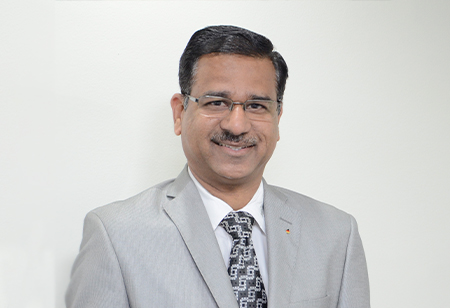
In a recent conversation with Industry Outlook, Hemant shared his valuable insights on various aspects pertaining to the current pump manufacturing sector in India.
Hemant Watve, boasting an extensive and illustrious career spanning over 35 years, joined Wilo Mather & Platt pumps private limited in 2011. Prior to this, he successfully handled key leadership and managerial positions across companies such as Kalyani Hayes Lemnerz, Sandvik Asia, Whirlpool India, and Mico Bosch.
We have been witnessing a large number of advancements in pump manufacturing and design. Casting processes too have evolved significantly over the years, and with the recent entry of investment castings and laser welding, the efficiency of the pumps too have improved exceptionally to such an extent that we are almost able to achieve the efficiency levels that are defined by the Hydraulic Institute standards. With the recent tech advancements of being able to integrate IoT with the pumps, it is safe to say that the pump industry has undergone a serious metamorphosis. The old pumping infrastructure which existed in many countries even till date are now having to be changed or either upgraded.
When we talk about the importance of pumping water from a human sustainability perspective, for instance, in a waste water treatment plant, AI is enabling organization to identify the timings at which there is more load on the pumping systems in order optimize the pumps to function as per that pattern. Once the treatment plant is centralized, you have to pump effluents into the treatment plant from multiple points` of the city. Doing this at the same time for all point leads the treatment systems in the plant to be overloaded. By leveraging AI and IoT, the pumping stations can communicate virtually with the treatment plant, identify the load capacity of the plant, and accordingly pump-in the waste water.
In the case of water distribution, IoT enables city authorities if there are any water leakages happening, measure the water consumption of various localities, and accordingly optimize the water distribution systems. Thus, it is safe to say that right from building services, Agriculture to industries or commercial setup, AI and IoT will play the crucial role in optimizing water usage and distribution.
The supply chain risks today have become more predominant post the covid pandemic. For the first time in many years, we got to witness many industries being shutdown in Malaysia, Taiwan and China causing shortage of semiconductors. Later, the supply of steel became a major challenge to our industry due to the Russia-Ukraine war crisis. Also, due to the sudden surge in EVs, the automobile industry is now consuming more copper than ever before, which has had a severe impact on our industry where copper is used for making motors for the pumps. Furthermore, due to the Blue Sky Initiative of China, a lot of foundries' requirement has now shifted to India, where the capacity should now be enhanced significantly. Due to all these developments, the supply of raw materials for our industry has been witnessing a lot of fluctuation over the last few years.
Earlier, the communication between the pump and the power supply panels used to be through wires, which many times were being bitten by bats or rodents. Now, wireless protocols have emerged. When you want to do the irrigation of fields, the system earlier used was flood irrigation. But today, people are following the piped irrigation systems such as drip irrigation technique. In this method, farmers are able to monitor the moisture content in the soil through IoT sensors and accordingly release the required amount of water for the plants - all of which is automated along with the pumps. Also, with the use of variable frequency drives, a single pump is now able to run at different speeds and give difference pressure and volumetric requirements of water. Additionally, remote monitoring systems are now enabling us to get real time updates of pump vibrations and varying temperatures on our smartphones itself, rightly predict if it is to cause a failure, and take corrective measures.
When we talk about sustainability, there are various aspects involved; right from the norms of carbon emission to the usage of power. Pumps are approximately consuming up to 20 percent of the energy worldwide for diverse water circulation needs. Today, many infrastructure companies including those in Europe and Americas are using outdated pumps since they were all installed 20-30 years back. However, there have been a lot of tech advancements in pumps that have made the modern day pumps better in every way. This has definitely had a positive impact on the emission of carbon dioxide and energy usage as well. Additionally, the usage sheet metal in pumps has resulted in reduced usage of metals in pumps and increased usage newer grades and sealing systems that are more sustainable and long-lasting.
We use cookies to ensure you get the best experience on our website. Read more...